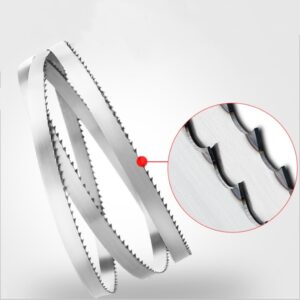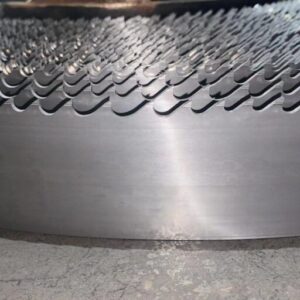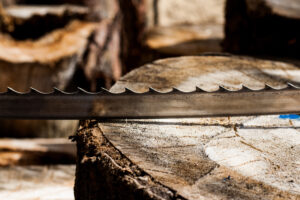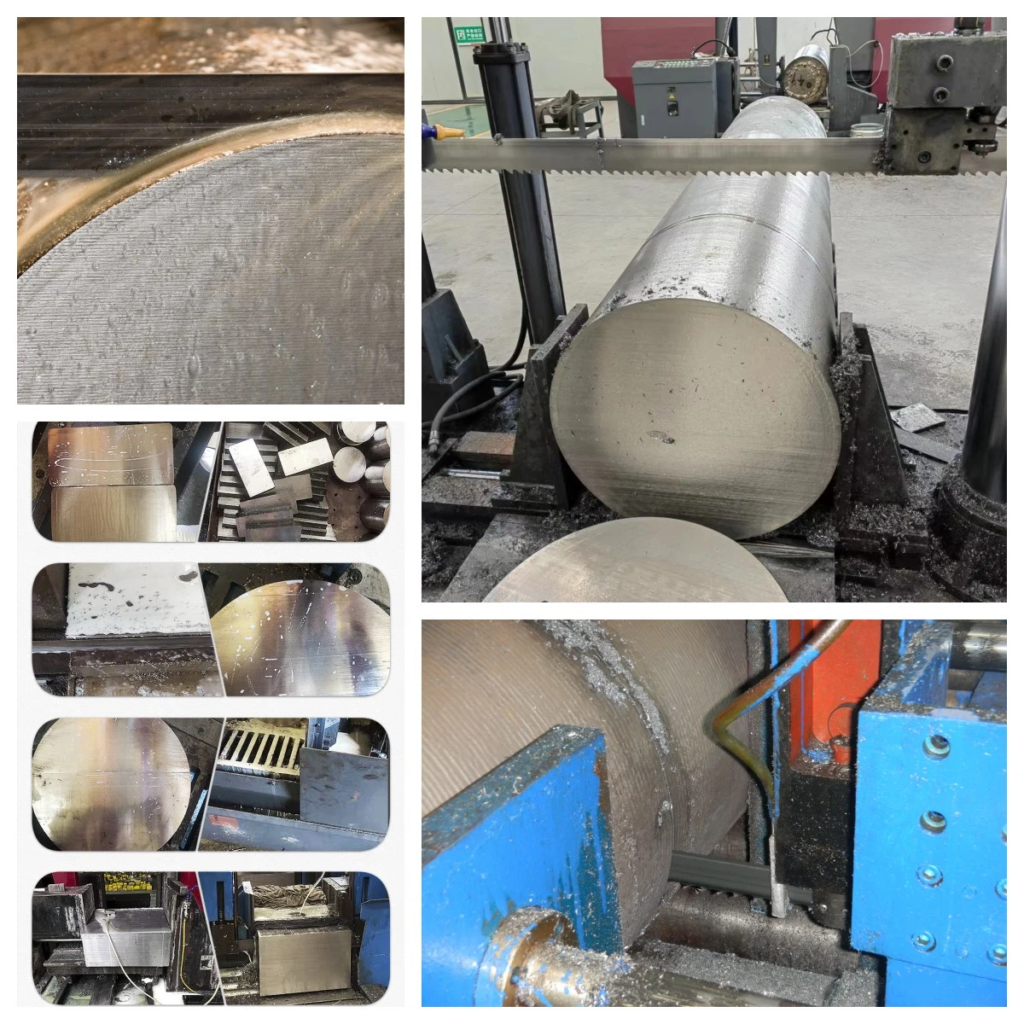Choosing the right bandsaw blade can feel overwhelming, but getting it right is essential for efficiency and precision. In this guide, I’ll help you figure out exactly what blade you need.
To choose the right bandsaw blade, you need to consider factors like size, material, and cutting purpose. Different tasks require different blades, so understanding your needs is key to selecting the perfect one.

Now that you have a basic understanding, let’s dive deeper into the specifics of figuring out what size bandsaw blade is right for you and your equipment.
How do I figure out what size bandsaw blade I need?
Selecting the correct bandsaw blade size can be tricky, but it’s the first step to successful cutting. Without the right size, even the best blade can’t perform well.
To figure out the right size bandsaw blade, measure your bandsaw’s wheel diameter and check the blade length. These two factors are key to ensuring a good fit.

The size of your bandsaw blade depends on several factors that must align with your bandsaw’s specifications. Start by checking the manual of your bandsaw. This should include the maximum and minimum blade lengths, width, and thickness that your machine can handle. You can find this information on the bandsaw itself or from the manufacturer.
-
Blade Length: The blade length is perhaps the most critical dimension. It should fit perfectly on your bandsaw’s wheels. To determine the correct length, measure the distance from one end of the wheel to the other while the blade is in place.
-
Blade Width: The width of the blade determines how tight of a curve it can cut. For straight cuts, wider blades are typically used. However, for intricate or tight curves, a narrower blade is essential. Blade width is often an important consideration when you’re working with specific materials like wood or metal.
-
Blade Thickness: The thickness of the blade affects its strength. Thicker blades are more robust and are generally used for cutting tougher materials. For softer, more flexible materials, a thinner blade may be more efficient.
-
Tooth Count: The number of teeth per inch (TPI) is another important factor. Fewer teeth make for faster cuts, while more teeth offer a smoother cut but at a slower pace. The right TPI depends on the material you are cutting.
Let’s take a quick look at some common blade sizes and their uses:
| Blade Size | Material Type | Common Uses |
|---|---|---|
| 1/4 inch | Wood, plastic | Fine cutting, curves |
| 1/2 inch | Wood, metal, plastic | Versatile, medium cuts |
| 3/4 inch | Metal, hardwood | Straight cuts, thicker wood |
| 1 inch | Metal, thick wood | Heavy-duty cutting |
Understanding these factors will help you select the right blade for your specific cutting job.
What is the most common bandsaw blade?
Not all bandsaw blades are made equal. But which one is the most common, and how do you know if it’s the right fit for your needs?
The most common bandsaw blades are bimetallic blades. These blades are versatile, durable, and suitable for a wide range of materials. They’re commonly used in industries like woodworking and metalworking.

When it comes to choosing a bandsaw blade, the bimetallic blade stands out as the most common choice across industries. These blades are made by welding a high-speed steel tooth to a flexible backing material, usually a carbon steel. This combination gives them superior cutting power and flexibility, making them ideal for a wide range of materials, from wood to metal.
Bimetallic blades are popular because they offer a balance between durability and cost. They last longer than regular carbon steel blades and can withstand high temperatures and hard materials. They’re also relatively flexible, allowing for smooth, consistent cutting without breaking easily.
For companies like yours, where precision and cost-efficiency are critical, bimetallic blades are often the best choice. They are highly effective for cutting a range of materials, from softwood to metals. They also require fewer replacements compared to standard blades, which means fewer maintenance costs over time.
However, you may need to consider specialized blades for certain tasks. For example, if you’re cutting very thick materials or need finer cuts, you might require carbide-tipped blades. These blades last even longer than bimetallic blades but come at a higher price.
What determines the size of a bandsaw?
The size of a bandsaw is determined by several factors, all of which influence its cutting capacity and the blades that it can use.
The size of your bandsaw depends on the throat depth and the height of the material it can cut. These specifications dictate what blade sizes will work best for your bandsaw.
The overall size of a bandsaw is crucial because it affects both its cutting capacity and the blade sizes you can use. The two main dimensions to consider are throat depth and cutting height.
-
Throat Depth: The throat depth is the distance between the blade and the vertical frame of the machine. It determines how wide a piece of material you can cut. A larger throat depth means you can cut wider materials, but it also means you may need larger blades to match the machine’s capacity.
-
Cutting Height: This refers to how tall a piece of material can be before it exceeds the cutting capacity of the machine. It’s an important dimension to consider when working with thicker materials. The cutting height will tell you whether your blade has the reach needed to handle large pieces.
These two dimensions are essential because they set the limits for the bandsaw blade you can use. If you try to fit a blade that’s too large or small, it won’t work correctly and could even damage the machine. Your bandsaw’s manual should give you these measurements, helping you select a blade that fits within these boundaries.
For example, if your bandsaw can cut a maximum height of 6 inches, you’ll want to avoid blades that are too small, as they won’t give you enough cutting power. Similarly, if you plan to cut thick materials, you may need a larger and more durable blade.
Are bandsaw blades universal?
You might be wondering if bandsaw blades are universal across all machines. After all, it would be easier if you could swap blades between different bandsaws.
Bandsaw blades are not universal. Each bandsaw model has specific requirements for blade length, width, and thickness, which vary depending on the machine’s design and the material being cut.
The short answer is no, bandsaw blades are not universal. While it may seem convenient to assume that all blades are interchangeable, the reality is that each bandsaw model has unique specifications. These specifications determine the type and size of the blade that will work with the machine.
-
Blade Length: As mentioned earlier, the blade length is determined by the size of the bandsaw’s wheels. A bandsaw with larger wheels will typically require a longer blade. Some bandsaws are designed to use specific blade lengths, so even if a blade fits your machine, it may not perform optimally.
-
Blade Width and Thickness: Different bandsaws have different capacities for blade width and thickness. A machine designed for cutting fine curves may require narrower blades, while one meant for heavy-duty cutting will need a thicker, stronger blade. If the width and thickness of the blade are not within the machine’s capacity, it won’t cut efficiently.
-
Tooth Design: The tooth design is another factor to consider. Blades come with different tooth configurations, such as hook, skip, or regular teeth. These configurations are optimized for certain types of cuts and materials. If you choose a blade with the wrong tooth design, it can impact cutting speed, smoothness, and accuracy.
In summary, you need to know your bandsaw’s specific requirements before choosing a blade. If you’re unsure, check the bandsaw’s manual or ask the manufacturer for guidance.
Conclusion
In conclusion, choosing the right bandsaw blade requires careful consideration of your bandsaw’s size and the material you’re cutting. By paying attention to blade specifications, you’ll get the most efficient results.



